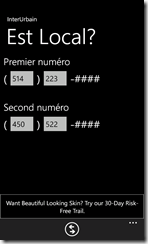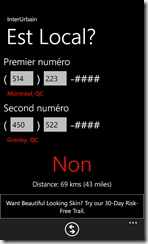After creating a similar app on Windows Phone, I had fun making a similar app on Windows 8: Patiner.
The app allows you to view the status of the ice rinks on the island of Montreal by navigating the map. It’s very simple and that’s intentional, but improvements are already planned for future versions.
The data comes from Patiner Montreal, which offers an excellent web portal and links to apps for other operating systems.
[Read More]![logoFooter[1] logoFooter\[1\]](/img/logoFooter%5B1%5D_thumb.jpg)
 On February 25th, I will be giving a presentation titled
On February 25th, I will be giving a presentation titled  The productivity tools for
The productivity tools for 



